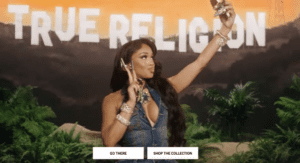 “If I see something once, I think it’s interesting. If I see it twice, I wonder if it’s a trend. If I see it a third time, I know it’s a trend.” – Beth Comstock, speaking at Inbound 18
“If I see something once, I think it’s interesting. If I see it twice, I wonder if it’s a trend. If I see it a third time, I know it’s a trend.” – Beth Comstock, speaking at Inbound 18
Comstock should know. As former vice chair of GE and head of innovation at one of the world’s largest companies, it was her role to proactively see and understand trends.
Three interrelated trends emerged from the sessions at this year’s Inbound—change, trust and authenticity. Marketers should pay attention to how these insights can be leveraged for success.
Insight #1: Adapt or Go Extinct
Human knowledge is doubling every 12 hours in some fields. The era of linear innovation has clearly passed. We now live in a time where change is constant and exponential. New ideas already appear faster than people or organizations can process them. Perhaps even more worrying, the rate of change will increase even further with advancements in artificial intelligence and machine learning in the very near future.
To survive in this environment, marketing must adapt. And lead. It is no longer sufficient for marketers to simply make noise and host events. They must lead by example and drive strategy. “Marketing should be involved in the business idea at the beginning, not at the end when we launch the product,” noted Comstock.
You May Also Enjoy:
- Injecting Real Transparency Into Customer Experience
- Creating Great Consumer Experiences: Four Areas to Master
Adapting to that new reality, Hubspot has decided to officially retire the marketing funnel. “It has done its job. But it no longer works. Let’s send it off to a well-deserved retirement,” said CEO Brian Halligan. The problem with the funnel, he argued, is that it focuses almost exclusively on producing new customers, to the detriment of satisfying existing customers and allowing them to help grow the organization.
Going forward, Hubspot is adopting the flywheel, which leverages customer momentum to drive growth. In the flywheel model, the customer experience is reimagined by delighting customers and reducing friction. If a new customer leaves Hubspot within eight months, that sales rep will have their commission clawed back. This ensures that sales focuses on customer delight rather than just closing the deal. “It used to be best product won. Now it’s best experience that wins.”
Insight #2: Rebuild the Trust
Trust in traditional institutions is at an all-time low—the public is more skeptical ever before towards government, news, religious institutions, entertainment icons, sports heroes, politicians, companies, science and businesses. Even charities have suffered a remarkable drop in public trust – 42% of Americans now say that they do not trust charities and over 70% say that charities waste donors’ money, said Scott Harrison, founder of charity: water. This has tremendous consequences for businesses and marketers. Organizations will not be allowed to offer innovative solutions to serious problems if customers no longer find them credible.
Clearly, the old way of doing things no longer works. Harrison shared the mission of his organization—to provide clean water throughout the world—in a keynote address, noting that the public’s trust in nonprofits needs to be rebuilt.
Harrison does not want to follow the typical charity approach, which relies on guilt and sadness to solicit donations. “You know those advertisements which pan on a crying child and then an 800-number fades in,” he said. “Those are emotional blackmail. Great brands never use shame or guilt to get people to spend money, why should charities be different?”
To overcome the deep cynicism and lack of trust, Harrison seeks to build a charity that compels public participation through transparency, positivity, and 100% allocation of public donations directly to water projects. To create trust in the brand, each one of charity: water’s projects is completely transparent and prove-able through a combination of technology and local testimonials. “No one had ever heard of this – a charity that comes back to you with transparency about what was accomplished.”
Does creating trust in a brand work? For charity: water, it does. It already received thousands of dollars of donations from the Inbound audience before Harrison’s keynote was even finished.
Insight #3: Authenticity is the Only Way Forward
If trust is the price companies are forced to pay, authenticity is the currency that will pay for it.
Sangram Vajre, co-founder of Terminus and host of the #FlipMyFunnel podcast, described three distinct stages of authenticity. Customer engagement, he noted, increases along with authenticity. In the first stage, which most marketers have traditionally strived for with inbound marketing, interactions are transactional and volume-based.
“The lead is the only metric anyone cares about,” Vajre laments, noting that marketing must reimagine what it means to engage customers. He believes that the best companies will adopt a “one team culture” that is truly customer-centric and relies on customer community to drive growth.
“Every touchpoint with a customer, you’re either building your brand or taking it down,” Vajre notes. “If you want to future-proof your marketing, you have to be authentic. We have to drop words like ‘farmed’ or ‘hunted.’ No customer wants to be farmed or hunted.”
This was a concept that was further cemented by Marcus Sheridan, owner of River Pools and Spas in Warsaw, VA. Sheridan started the company in the 90s from the back of his pickup truck. By focusing on transparency and authenticity, River Pools has become one of the largest fiberglass pool manufacturers in the entire region.
He emphasizes that his strategy for success hinges on his ability to proactively answer customer questions that no one else dares to address. His website answers how much a pool costs and the specific factors that go into determining the price. To ensure that his customers are every bit as educated about pools as they want to be, he gives away the entirety of his manufacturing process in full detail, allowing virtually anyone to replicate his product.
And in what must be one of the most unique examples of authenticity, Sheridan even promotes who he feels are his six best competitors. “If they don’t buy from me, I want to at least ensure that they choose from the best alternatives.”
It is a mistake, though, to simply pretend to be authentic about a cause for the sake of building a brand. Amanda Slavin, CEO and Founder of CatalystCreativ, argues that a customer’s trust must be earned before asking them for for anything. She advises that brands build narratives that align with the organization’s values. This leads to authenticity which then translates to brand advocates. She cites the passion of Beyonce fans or Harley Davidson riders—“those brands have created an identity that makes people feel like they’ve added value to their lives.”
Creating the change
If authenticity is the road forward, then learning to manage change is the vehicle that will deliver us there.
“Change happens when you give yourself permission to imagine a better future,” said Comstock, noting that folks who guard the status quo are often simply afraid to change. “Change threatens their hold on power and they reflexively say ‘no.’ To me, no simply means ‘not yet’.”
Abdul Rastagar is the associate director of marketing at Veeva Systems.



 Network
Network

